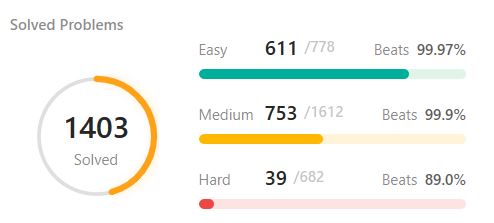Classic Dynamic Programming VII
This is a simple one where you don't even need to allocate extra memory - use the grid itself as the DP storage, assuming that you don't need to keep the elements of grid intact. Code is down below, cheers, ACC.
Count Submatrices with Top-Left Element and Sum Less Than k - LeetCode
You are given a 0-indexed integer matrix grid and an integer k.
Return the number of
that contain the top-left element of the grid, and have a sum less than or equal to k.
Example 1:

Input: grid = [[7,6,3],[6,6,1]], k = 18 Output: 4 Explanation: There are only 4 submatrices, shown in the image above, that contain the top-left element of grid, and have a sum less than or equal to 18.
Example 2:

Input: grid = [[7,2,9],[1,5,0],[2,6,6]], k = 20 Output: 6 Explanation: There are only 6 submatrices, shown in the image above, that contain the top-left element of grid, and have a sum less than or equal to 20.
Constraints:
m == grid.lengthn == grid[i].length1 <= n, m <= 10000 <= grid[i][j] <= 10001 <= k <= 109
public int CountSubmatrices(int[][] grid, int k)
{
int retVal = 0;
for (int r = 0; r < grid.Length; r++)
{
for (int c = 0; c < grid[r].Length; c++)
{
if (r - 1 >= 0 && c - 1 >= 0)
{
grid[r][c] += grid[r - 1][c] + grid[r][c - 1] - grid[r - 1][c - 1];
}
else if (r - 1 >= 0)
{
grid[r][c] += grid[r - 1][c];
}
else if (c - 1 >= 0)
{
grid[r][c] += grid[r][c - 1];
}
if (grid[r][c] <= k) retVal++;
}
}
return retVal;
}



Comments
Post a Comment